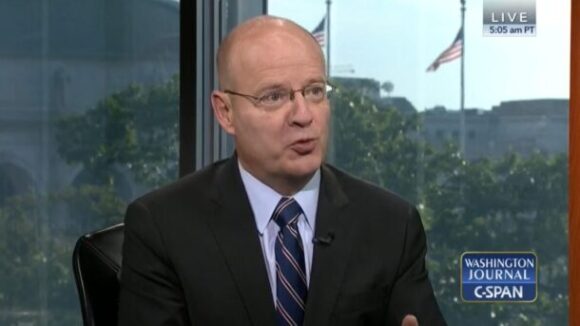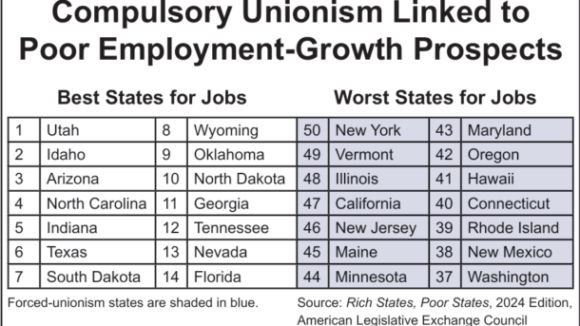Will Team Biden Weaponize Workers’ Pensions?
Big Labor abuse of worker pension and benefit funds as a means of advancing union bosses’ self-aggrandizing policy objectives is a familiar phenomenon.
Right to Work freedom strongly linked to economic prosperity explains Vincent Vernuccio in his Townhall post:
The NLRB’s complaint is in fact a back-handed compliment to right-to-work laws, because it is based on the assumption that right-to-work laws help attract businesses. The preponderance of the evidence favors that position.
As Arthur B. Laffer and Stephen Moore recently noted in the Wall Street Journal, from 2000 to 2009 right-to-work states “grew faster in nearly every respect than their union-shop counterparts: 54.6% versus 41.1% in gross state product, 53.3% versus 40.6% in personal income, 11.9% versus 6.1% in population, and 4.1% versus -0.6% in payrolls.”
A recent analysis by the office of Senator Jim DeMint (R-S.C.) shows that right-to-work states created 1.3 million more jobs in the private sector, had 3.5 percent faster income growth, and 46 percent higher business growth than forced union states between 1993 and 2009.
And, according to a recent National Right to Work Committee analysis of Department of Labor data, over the past 10 years, the top five states in creating new jobs are right-to-work states, while the bottom five are forced unionism states. Workers in right-to-work states also have more disposable income than those in forced unionism states.
In right-to-work states, unions must demonstrate to workers that their service has value or they will refuse to join. As in other areas of the economy, competition makes providers of goods and services—in this case the representation services of labor organizations—more efficient and responsive.
Competition also extends across geographical boundaries, as the shifts in population of recent decades show. Workers and business are voting with their feet. Since 1970, the population in right to work states has more than doubled, while only increasing 25.7 percent in forced unionization states. This substantial gap in population growth is likely attributable to people moving from forced unionization states to right-to-work states because of better job opportunities arising from right-to-work states’ better business environments.
Currently, policy makers in three states—Michigan, Maine, and New Hampshire—are considering enacting right-to-work laws. As they ponder their options, they should look at where the jobs are. Workers want more jobs, faster income growth, better job security, and freedom of association—these are all things that right-to-work laws can help achieve.

Big Labor abuse of worker pension and benefit funds as a means of advancing union bosses’ self-aggrandizing policy objectives is a familiar phenomenon.

What impact does handing a union monopoly power to deal with your employer on matters concerning your pay, benefits, and work rules have on your pay?

Wherever Big Labor wields the power to collect forced union dues, union bosses funnel a large share of the confiscated money into efforts to elect and reelect business-bashing politicians. Employment growth tends to lag as a consequence.